Free admission
***
Pictures Galleryby Denise Adams
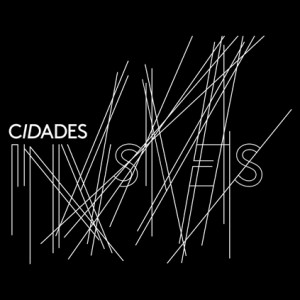
***
Pictures Gallery
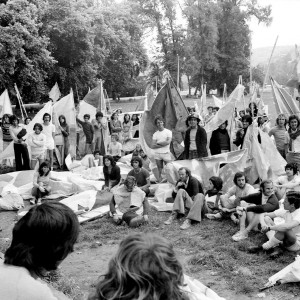
Manuel Casanueva and “Los Torneos”
Organization: Felipe Mujica
Opening: 25 May, 7 pm
(part of our SAARA NIGHTS event)
Exhibition continues until 24 June
Visiting times: Tuesday to Friday, 11 am to 7 pm
Free admission
“Los Torneos” is the name of a game created and developed by architect and professor Manuel Casanueva, alongside a group of colleagues and students of the Catholic University of Valparaiso School of Architecture (Chile) between 1974 and 1992. Designed as a playful and collective exercise, its structure (space, equipment, rules, and artifacts) sought to generate different situations of body and spatial interaction, with emphasis on chance and improvisation. The exhibition that opens at Despina | Largo das Artes gathers documentation (photos and videos) of some selected “torneos” as well as pictures of Casanueva study books. Both images and documentation are displayed for the first time in Brazil.
During the opening event, a re-edition of the publication “Jugador como pelota, pelota como cancha”, edited and illustrated by Felipe Mujica, will be available for sell. Printed in risograph with a silk cover, this is the third edition of a total of 100 copies, bringing together images and text descriptions of each “torneo” (written by Manuel Casanueva – in Spanish and English).
This exhibition was made possible thanks to the support of:
Despina | Largo das Artes, Marcio Botner, Pablo León de la Barra, Bernardo José de Souza, Archivo Historico José Vial Armstrong, School of Architecture and Design, Catholic University of Valparaiso, DIRAC, Ministry of Foreign Affairs (Government of Chile), Ximena Iommi, Olivia Casanueva, Sylvia Arriagada and Esmeralda Rodriguez.
Information about the image (above)
Students and teachers gathered before (or after) the “torneo” CARRERA A CIEGAS, 1974, Sporting, Viña del Mar, Chile. Credit: Arquivo Histórico José Vial Armstrong, School of Architecture and Design, Catholic University of Valparaiso, Chile.
Pictures Gallery
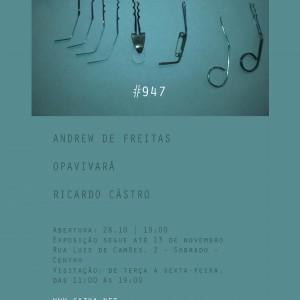
On 28 October 2015, Gazua #947 was opened to the public as the first action of the Gazua platform*, bringing together the works of artists Andrew de Freitas, Ricardo Càstro and Opavivará collective.
About the artists
ANDREW DE FREITAS often uses various tools and production processes in order to exploit the peculiarities of everyday experience. His works reconfigure pre-existing materials and situations, altering the familiarity we have with objects of everyday life. The artist studied art and philosophy in his hometown of Auckland, as well as in Canada and in Frankfurt am Main, as a student of Simon Starling and Peter Fischli. Currently, Andrew lives and works in Rio de Janeiro, where he participates in the Capacete Programme.
OPAVIVARÁ is a collective formed in 2005. The group creates devices, which provide collective experiences and actions in public places, galleries and cultural institutions, proposing a sort of inversion of modes of occupying urban spaces. Opavipará actively participates in the contemporary art scene in Brazil and abroad.
RICARDO CÀSTRO is a visual artist, performer and creator of the “Abravanada Art”. He lives and works between São Paulo and Rio de Janeiro. His main research focuses on the relatioship between body and space. Currently, Ricardo is engaged in the execution of works open to public participation. Through installations, videos, performances and objects, the artist proposes an individual shifting, which can open a new mental space and a new form of free thinking. Ideas of magic, cycle, death and rebirth are present in Ricardo’s production. He holds a degree in Architecture and Urbanism from Mackenzie University (São Paulo, 1995) and a specialization in Visual Arts from Fundação Armando Alvares Penteado – FAAP (Sao Paulo, 2000).
More information
www.gazua.net
www.facebook.com/gazua.net
Pictures Gallery
* Gazua means any lockpick tool which serves to open locked doors and padlocks. Gazua comes as a platform which brings together artists and people involved in other production areas. The goals are to promote rapid access to exhibition spaces and unconventional spaces in Rio de Janeiro and to develop channels to materialize various projects. The artists involved in Gazua are Anton Steenbock, Rafael Perez Evans and Pablo Ferretti. All of them have studios at Despina, which serves as a spot for drawing up and implementing proposals.
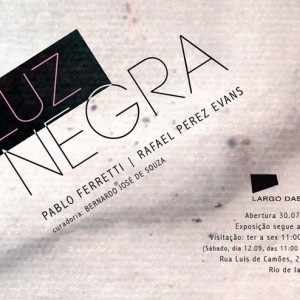
In this exhibition, artists Pablo Ferretti and Rafael Perez Evans confront pictorial practices which are based on the relationship between history and individual memory, between surface and depth. In a subjective and collective archeology exercise, both artists shed light on what Giorgio Agamben calls “the darkness of the present”.
Curator
Bernardo José de Souza
About the artists
Rafael Perez Evans is a Spanish/British artist who lives and works in Rio de Janeiro. Graduated in Fine Arts from The Goldsmiths University of London, his works have been exhibited in Mexico, United States, London, Berlin, Madrid and Sao Paulo. Exploring ethnographic research in his practice, Rafael deals with local and collective histories, which will result in mixed media installations, on which incur photography, furniture, video, abstract paintings and collected images. This mixture of elements aim at producing new stories and potential problems inherent in their readings. Some works in video and other actions activate a tracking exercise, something like following the steps, digging the information. Art as archeology.
Pablo Ferretti was born in Porto Alegre (Rio Grande do Sul) and lives and works in Rio de Janeiro. His research on painting deals with issues of accumulation and suspension, control and impermanence. Graduated in painting from the Federal University of Rio Grande do Sul, Porto Alegre, RS (2001), Pablo has a master’s degree in painting at the Royal College of Art, London, England (2006-08). In 2008, the artist is awarded an annual scholarship by The Ridley Scott Associates, RSA Films Artist in Residence. In 2012, he is featured in the VI Açorianos Fine Arts Prize, in Porto Alegre. In 2014, he is shortlisted for the Investor Professional Art Award – PIPA.
Pictures Gallery
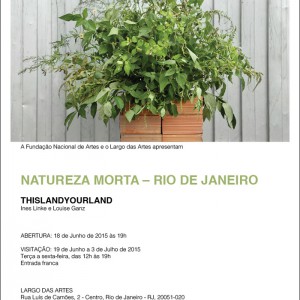
Artists
Ines Linke
Louise Ganz
Pictures Gallery
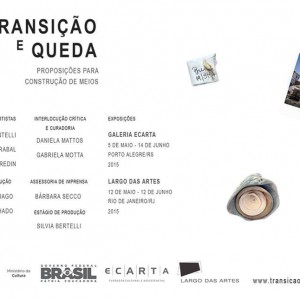
Artists
Eduardo Montelli
Jonas Arrabal
Mayra Martins Redin
Curators
Daniela Mattos
Gabriela Motta
Pictures Gallery
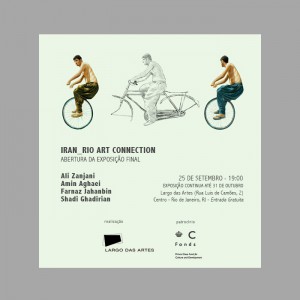
The heterogeneous universe of artists that made up this exhibition illustrates the diversity of references to inform the current artistic practice in Iran.
The contemporary scenario of the country seems built like a patchwork quilt that juxtaposes nostalgia for the past to a seemingly insurmountable present, in which contemporary art and the connections with the West function as an escape to a reality permeated by war and violence on various levels.
In this context, Shadi Ghadirian exhibited a series of photographs that, on the one hand harks back to the Flemish still life, whilst juxtaposing images of current fashion magazines. She combines objects of consumerism with an arsenal of contemporary media imagery. Amin Aghaei, conceptually explored in painting, video and photography the split, dull and chaotic experiences of those who live in a warzone. Ali Zanjani, from archival images of 16mm film, combined references to Iranian women of yesterday and today in the “Pregnancy/Static series”. He reapropriates images that capture feminine beauty in the contrast to the image of the veiled woman steriotypes of the Middle East and the exposure of female attributes in the West; Farnaz Jahanbin made use of banners, reproducing iconic images of ancient and modern history of Iran, which she used as a background to graphic interventions in painting with traditional calligraphy of her country. Her work paradoxically has a resemblance to the street art produced in the West.
The “Iran_Rio Art Connection” project is an initiative of Despina | Largo das Artes which was sponsored by the Dutch institution Prince Claus Fund for Culture and Development. During the month of September, four representatives of a new generation of Iranian artists occupied Largo das Artes studios to attend a special residency in Rio de Janeiro. A series of events and parallel activities happened simultaneously to the period of the residence in order to strengthen inter-cultural dialogue and promote networking between artists from the Middle East and Brazil.
During the opening of the exhibition, a brief concert of traditional Persian music took place in the gallery space with the participation of the artist Farnaz Jahanbin and pianist Tomas Gonzaga.
ABOUT THE ARTISTS
Ali Zanjani is a photographer who depicts Iran’s social and cultural heritage within the framework of the changing political landscape over the past 35 years. His photos include a series on wrestlers, Iran’s national sport. The series captures still images from a wrestling instruction video, adding humour to the sport. He also created a series of images based on lost photographs of a pre-Iranian revolution women’s basketball team. For someone born after the 1979 revolution, these images of women in sports not clad in hijab are unique and they are strictly forbidden in Iran’s political climate. He has been working with Dubai’s Salsali Private Museum since 2011 as well as being a selected photographer at Tehran Contemporary Museum of Art and the Beirut Art Fair in 2012. Zandjani continues to work on numerous projects, including ‘Live Moment of Wrestling’, ‘Life Is Too Short’, ‘Show Off’ and ‘Just Between Us’. He is based between Dubai and Tehran.
Amin Aghaei was born in 1982 to parents displaced by the Iran-Iraq War. He spent his childhood homeless traveling with his family around Iran. His peripatetic lifestyle made him turn to drawing as an escape from the despair of homelessness. Eventually when his parents settled he focused more on his art to help him distance himself from his childhood on the road. Due to the political repression in Iran he began to draw cartoons and this soon seeped into his paintings, and so his work maintains some critical humour. His medians are painting, sculpture and video. His work takes on a magical realism on themes unique to Iran, which made him a popular choice among the panel selecting the artists. We would like to acknowledge Azadeh Vafardari and Amirpasha Shafaei, who helped to make possible the presence of Amin in Brazil. Our big thanks to them! For more information: http://aminaghaei.com/
Farnaz Jahanbin is an internationally recognised artist using Persian and Arabic script to create modern interpretations of the ancient art of calligraphy. Her paintings use abstract form as well as more traditional interpretations of script. Jahanbin is also a Classical Persian singer. As a woman she is not allowed to perform in front of a mix public in Iran. She will however be performing in Rio de Janeiro as part of the residency. For more information: http://www.saatchiart.com/account/profile/175218
Shadi Ghadirian is a leading Iranian photographer whose work has been shown at major museums throughout the world including at the Museum of Fine Arts in Boston and Los Angeles County Museum of Art. She has also been exhibited in various galleries throughout Europe and Asia. Her work is a dialogue on being a Muslim woman in Iran but her themes resonate throughout the world. In her first collection “The Qajar Series”, Ghadirian photographed women dressed in traditional Qajar clothes but juxtaposed them with modern objects like a stereo or a coke can to highlight Iranian women’s role in a society where they tread carefully between the modern and the traditional elements of society. Her second series “Like Every Day”, which she made after getting married, is a comment on the mundane routine that many women are consigned to and by which some are defined. These works confirm Shadi’s concern to highlight the role of Iranian women in a conflict society, marked by censorship and religious fundamentalism. To learn more about Shadi and her work, visit:http://shadighadirian.com/
Pictures Gallery
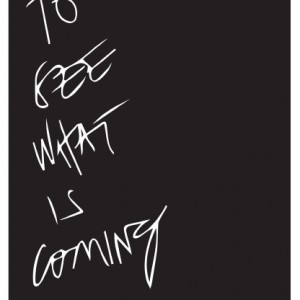
This exhibition was conceived as a result of the workshop Contemporary Curatorial Practices: thoughts, processes and materializations, led by curators Bernardo José de Souza and Michelle Sommer, between April and July 2014 at Despina | Largo das Artes.
Based on the curatorial proposal of “second nature” and always guided by horizontality in discussions and critical emancipation in the artistic field, a series of discussions, lectures and conversations with artists led to the construction of an art project that also included performances, film screenings and publications, which happened parallel to the exhibition during the months of July, August and September 2014.
Curators: Bernardo José de Souza and Michelle Sommer
Artists: Audrey Cottin, Daniel Steegmann Mangrané, David Cronenberg, Eadweard Muybridge, Fancy Violence, Gisela Motta and Leandro Lima, Gustavo Ferro, Harun Farocki, Laura Lima, Le Corbusier, Luiz Roque, Matheus Rocha Pitta, Neil Beloufa, “Nuvem” – Estação Rural de Arte e Tecnologia / Cinthia Mendonça and Bruno Vianna, Pablo Ferretti and Rodolpho Parigi.
Opening: 17 July 2014 at 7 pm
Exhibition ran from 18 July to 13 September 2014
Programming:
July 17 at 7pm
Opening event
at Despina | Largo das Artes
August 14 at 7pm
Screening of the video “Ano Branco” (White Year) (7’, 2013) Luiz Roque + talk with artist and curators
at Despina | Largo das Artes
August 19 at 7pm
“Sculpture Stone Soup”, with artist Matheus Rocha Pitta
at Largo São Francisco, behind IFCs – Institute of Philosophy and Human Sciences UFRJ, opposite The Royal Portuguese Library.
August 28 at 7pm
Screening of “View O.T. – Operating Theatre” (a record containing a series of performances in 3 episodes), Audrey Cottin + debate with Rodrigo Nunes (Professor of Philosophy at PUC-RJ)
at Despina | Largo das Artes
September 6, between 3 and 9pm
“The Destruction Laboratory” – Nuvem, Estação Rural de Arte e Tecnologia
at Despina | Largo das Artes + Largo São Francisco
September 13, at 7pm
“Ópera_Ato 2”, Fancy Violence
at Despina | Largo das Artes
Workshop team of collaborators:
André Ribeiro, Bianca Bernardo, Bruna Grinsztejn, Giselle Sampaio, Icaro Ferraz Vidal Júnior, Nelson Pinho and Vinicius Jatobá.
A big thanks to:
Barracão Maravilha, Galeria A Gentil Carioca, Galeria Mendes Wood, Galeria Nara Rosler, Galeria Vermelho, Harun Farocki Studio, Luiz Camillo Osório, Merel van`t Hullenaar, Moysés Pinto Neto, Phosphorus and Rodrigo Guimarães Nunes.
Pictures Gallery
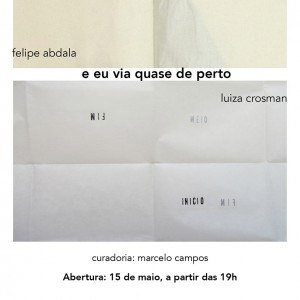
This exhibition presented recent and new works of artists Felipe Abdala and Luiza Crosman. Both located at and departing from the field of design, their works deal with the concepts of weight and visibility. Concepts that extend beyond design and take form in action, videos and photos. The drawing of the exhibition was thought of as a fruitful and purposeful action field, for the body to be activated .
Marcelo Campos is an independent curator and associate professor in the Department of Theory and History of Art from the Art Institute of UERJ. Professor at The School of Visual Arts of Parque Lage. PhD in Visual Arts by PPGAV School of Fine Arts / UFRJ. Marcelo has published texts on Brazilian art in national and international journals and catalogs. Author of “Emmanuel Nassar: engenharia cabocla” and organizer of the books “História da Arte: ensaios contemporâneos” and “História da Arte: escutas”.
Pictures Gallery
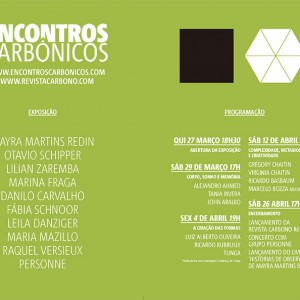
The editors of Revista Carbono, Marina Fraga and Pedro Urano, held the first edition of “Encontros Carbonicos”, a group exhibition of contemporary art, with the participation of artists and scientists engaged in interdisciplinary dialogue. The event took plae at Despina | Largo das Artes from 27 March to 26 April 2014.
The show brought together artists featured in the magazine, Otavio Schipper, Fabia Schnoor, Mayra Martins Redin, Lilian Zaremba, Rodolfo Caesar, Danilo Carvalho, Leila Danziger, Mary Mazzillo and Rachel Versieux, focusing on the works that create dialogue between art and science.
In Otavio Schipper’s work ’The Speed of Light’, the artist constructed a point of focus with metronomes, old eyeglasses and telegraph keys connected by steel cables, articulating the invention of perspective by Renaissance architect Brunelleschi, with poetic reconstruction of a device designed to measure the speed of light.
The exhibition comprised a heterogeneous group of works on different media. Mayra Martins Redin presented her ‘Listen Listening’ series, which won an award in the last “Novíssimos” exhibition at Galeria Ibeu. Lilian Zaremba displayed a video in which she investigates the stone galena, an electromagnetic mineral, which formed the basis for the creation of transmission by radio waves. The electromagnetic force is also at the center of the work ‘Image Latency ’ by Mary Mazillo. Fabia Schnoor showed her ‘Moths, Dots and Lines’ series, which explores the path left by moths in an old book about the lives of animals.
Danilo Carvalho displayed a film in which he rescued amateur-8mm footage of Ceará’s capital (Fortaleza). Leila Danziger peeled off pages of a science newspaper leaving only traces of the original and thereby re-imagines the story. The musician and researcher Rodolfo Caesar, who studied with Pierre Schaeffer at the Groupe de Recherches Musicales at the Paris Conservatory, closed the event with a multimedia presentation of the group ‘Personne’.
Besides the conference, ‘Encontros Carbônicos’ promoted debates open to the public. “The idea is to create a space for interdisciplinary experience in which artists and scientists present their research. The meetings take place within the exhibitio and the idea is that the discussions are not limited to oral presentations, but also pervade the materiality of the works exhibited”, explained the curators.
Participants in the debates were visual artists Tunga and Ricardo Basbaum, choreographer Alejandro Ahmed, mathematicians Gregory Chaitin (complexity theorist and professor emeritus at the IBM Watson Research Center) and Ricardo Kubrusly (also a poet and director of the Institute of History of Science UFRJ), cosmologist Luiz Alberto Oliveira (researcher at the Brazilian Center for Physics Research ) and psychoanalyst Tania Rivera. The debates were broadcasted live on the event’s website which also offered an online catalogue with photographs of works, texts and audio-visual material produced during the exhibition.
“’Encontros Carbônicos’ attempts to present art as an intellectual discipline as important as science or philosophy. Works and authors are invited to establish a common dialogue, working with divergent perspectives on reality”, explains Marina Fraga. “The artistic propositions affect our senses and intellectually, often introducing a reality that differs from rational thought. This then opens a space for creativity”
The first edition of ‘Encontros Carbônicos’ was sponsored by Funarte through its National Network Visual Arts Program and had the institutional support of Despina | Largo das Artes.
Pictures Gallery